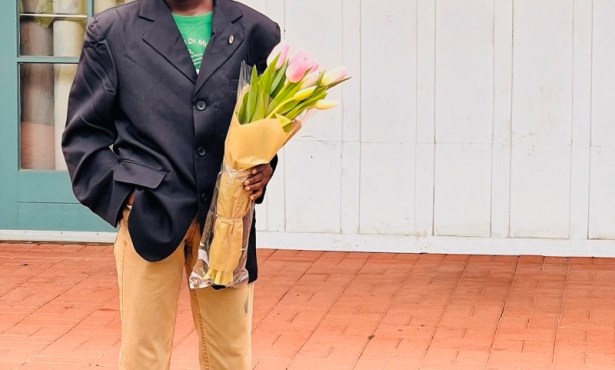Santa Barbara International Film Festival: Wrap Up
A Home Team Wrap to a Strong Festival

SBIFF seems to have found a new, workable groove in terms of a final night tradition, having wrapped for the third year in a row with a program of local films — by and about the special place we call home. At the Arlington Saturday’s closing night fandango, executive director Roger Durling told the packed house that what coalesces at festival time is a blend of “our local community” and “a global community that is formed during the festival.”
He also pointed out, with a deserved pride we all can share in, that SBIFF was cited by the Los Angeles Times as among the top 10 film festival in the nation. Fittingly, the local film closer night included an impassioned tribute to the late filmmaker (and once journalist colleague) Russ Spencer, who died last year. Spencer’s enthusiastic rallying efforts essentially seeded SBIFF’s now-sturdy Santa Barbara filmmaking component, starting around the time Durling took the reins of and re-charged the festival 17 years ago.
A palpable sense of communal solidarity and home team spirit buzzed in the house on Saturday, sometimes bursting out in hoots and hollers. The collective warmth factor was detectable especially when taking in such beloved area subjects as the splendor and hiking ops of the Los Padres National Forest (Preston Maag’s 10 Miles Out), the magical natural, preciously unspoiled wonderland that is the Carrizo Plain (Carrizo Plain: A Sense of Place, highlighting work of artists John Iwerks, Chris Chapman, and aerial photographer Bill Dewey), and an infectious tribute to “street musician” guitarist Bruce Goldish, with Michael Love’s beautifully made State Street Serenade. Those unfamiliar with the name may well know the sound of Goldish’s warm, rambling acoustic guitar work, resonating over downtown from the reverberant acoustic of Parking Structure #9, above the Fiesta Four multiplex. Goldish’s guitar work has been a defining feature of the State Street environment for a dozen years and running.
Also accounted for in this fine curated selection were two polished films by Andrew Schoneberger — The Last Ride and Hannah’s Ride, about a tough-skinned sixtysomething rodeo rider and a metabolically challenged young competitive bicyclist, respectively. Opening the evening, and nodding to the agricultural/labor legacy of our Tri-County region, was Cabrillo Village, about a worker housing project in Saticoy, with ties to courageous, historic protests by farm workers.

THE JUDGE-Y REPORT: Among countless memorable moments in the 35th SBIFF, Brad Pitt ended his tribute night at the Arlington with a witty, down-to-earthy acceptance speech, reminding the SRO crowd that he was also a local (at least off and on, and part-time). Clutching the trophy just handed him by director David Fincher, he paid a back-handed compliment to his interviewer, veteran critic-historian Leonard Maltin. “I’ve admired your words, Leonard,” said Pitt, who hasn’t always known love from critics over the decades. After a pregnant pause, he then qualified the statement, with a slight smile, “A little judge-y.”
Populating the audiences at the 11-day festival with 200-ish films, tributes, panels, and more, we’ve had ample opportunities to be “judge-y,” and a general sense of a thumbs-up appraisal mixes in with “meh” moments. Overall, this year’s crop of films felt stronger than last year’s, although seekers of more experimental of style-challenging work seemed lacking.
Among my favorite films that break stubborn cinematic formulae and seek out a new artistic poetry were: Danish director Marie Grahtø Sørensen’s surreal mind-bender Psychosia; Polish director Bartosz Kruhlik’s Supernova (a gritty real-time saga of an accident scene, but with expansive socio-political overtones); the bracing and alternately sweet and anarchic German film System Crasher, directed by Nora Fingscheidt; and, from Peruvian directors Daniel and Diego Vega, the Peruvians-in-Montreal tale, The Clash (La bronco), with its power built on the three As — alienation, angst, and ambiguity.
My favorite film from the final festival day — apparently a controversial choice, given the naysaying of fellow fest-goers — was the Norwegian film Disco. Director Jorunn Mykelbust Syversen slyly lays out the story of a teenaged competitive disco dancer in a repressively Christian household isn’t nearly as “straight” as it pretends and follows a unique path and cinematic voice. Resisting temptations to follow Hollywood’s narrative rules, the film uses extended scenes of Christian ritual, rhetoric, and collective hypnosis to aptly hypnotic effect, while its protagonist suffers in festering silence, and glides through life with practiced smiles and conformist behavioral choreography. Some of us are still trying to figure this one out, a good sign that we’ve been bitten by the bug of adventurous cinema.
BAKER’S DOZEN-BESTING: As is the annual ritual, festgoers tend to compile Top 10 lists, as a way of putting some order and subjective priority on what can be a dizzying pile of experiences. Here’s my judge-y list, bumped up to a dozen by necessity of the program’s quality factor: System Crasher, Kuessipan, Bastards’ Road, Invisible Life, The Clash (La bronco), 37 Seconds, Corpus Christi, My Vida, The Birdcatcher’s Son, Supernova, Disco.




You must be logged in to post a comment.